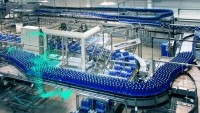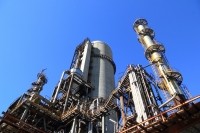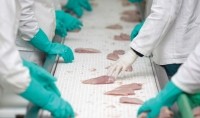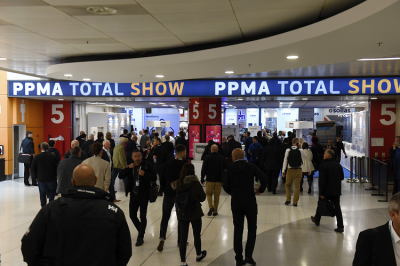DIGITAL FEATURE
The future factory: a broader perspective on industry 4.0

For Siemens, simply parachuting the shiniest equipment and highest spec software into plants isn’t enough: the ‘future factory’ can only be realised through greater collaboration between food and drink manufacturers and machine builders.
In ‘Collaborating to Create the Future Factory for Food and Beverage Manufacturers’, the company finds ageing infrastructure and rising costs were assailing the industry even before Brexit and the pandemic became issues.
Growing anxiety surrounding sustainability targets, machine performance and the redundancy of certain factory roles suggest manufacturers need more support and understanding on their individual automation and digitalisation journeys, the report argues.
“The overall conclusion is that machine builders are working hard to innovate and accelerate digital transformation while moving towards an operational model that enables everyone across the industry to collaborate for better outcomes.
“However, there are still hurdles to be jumped on both sides – such as talent shortages, facilitating collaboration, and even financing the necessary transformation.”
A modular solution
Given these hurdles, chucking technology at problems can only ever be part of the answer. The same can be said of big end-to-end overhauls. Another part of the solution often involves looking at production lines from a more modular perspective as well as a tech-driven one.
In the past factories could be dedicated to one product to satisfy a retailer’s needs. Now, direct-to-consumer and online business models often require smaller production runs or more frequent changes.
To this end, manufacturers are forced to become more agile and dedicated production lines often don’t cut it. Building a new factory or line to facilitate the production of another stock keeping unit can also be unrealistic and costly.
As a result, interest is growing in lines that can be continually reconfigured for different products and where required equipment can be inserted and integrated at various points along the flow of production.
Through modular systems, manufacturers can reconfigure equipment they already have to manufacture a completely different type of product.
One analysis by robotics and industrial equipment firm ABB claims such systems enable different pieces of equipment to interact with other systems quickly and without errors.
As Neil Parry, ABB UK commercial lead, claims the approach speeds up time to market and simplifies engineering. “Because recipes in the food industry need to be regularly changed, modular automation can be used to modify recipes from a function library without production stoppages. “Open automation and modular connectors prove customer choice doesn’t have to be a headache for automation environments.”
Modular systems also help make the best use of the frequent lack of space in factories to expand and increase flexibility.
Industry 4.0: the right choice?
In keeping with this idea of squeezing the most out of existing assets, implementing industry 4.0 and the internet of things (IoT) need not run counter to using traditional production methods or equipment. It can be easy to modernise for the sake of modernising. However, this may not benefit the whole production process.
At the Institute of Food Science and Technology’s virtual Spring Conference 2021, Crafty Tech director Adrian Marshall warned against such an approach. “You shouldn’t always automate the manual approach – you should think carefully about what it is you are trying to achieve. Don’t just go and add high-tech, there’s a few low-tech things that are quite effective.
“Even the most trivial things can impact your ability to automate. Industry 4.0 may be great, but industry 1.0 did some really quite clever things as well.”
Traditional methods
This was a sentiment shared by University of Nottingham associate professor of chemical and environmental engineering Nik Watson.
Also speaking at the conference, Watson said: “A lot of the challenges the sector faces can be tackled with common sense approaches and technologies that have been around for decades and that’s always the first place you should look. People get excited about these new terms and new technologies, but you’ve got to think about the business benefit and how it affects your organisation.
“A recent survey in Norway found that 80% of companies had an IoT project, but only 10% of those had looked at the business benefit and I think that’s really important.”
All in all, the future factory need not be a daunting and scary prospect for food and drink manufacturers. Of course automation technologies will play a pivotal role, but present day challenges will remain a key concern, and sometimes an old fashioned solution is all you need.
The meaning of ‘digital’
To get a balanced perspective on technology, we need to go back to basics to demystify it and determine what we want it to achieve. Simon Stark, business development manager for digital products and transformation at Multivac, breaks down what digital means for food manufacturers.
Data
“Data is available everywhere and it is increasing. Data is nothing less than facts – facts about us, our production and our machines. Based on these facts, we can make decisions and decision making is changing.
“We can make strategic decisions like ‘should we buy new machines?’ or operative decisions like ‘do we need to service our machines?’ We can also use that data for new business models and new products, and to improve our services.”
Individualisation
“Linked to customer focus, because we are all individuals. We have individual needs and markets. To achieve these individual needs, we need to keep connected to our customers and to our machines and our products. If we know how our products are working, we can act and we can put that in the middle of our new development.”
Globalisation
“We are global players and spread all over the world. This doesn’t end at our customers, we are also global producers and we have global partners. We need to hold up communication with our partners and our customers and this is only possible by using digital products and being connected.”
Internet of Things
“A big buzz word, but it just means to bring things into the internet. Bringing our machines and sensors into the internet means we know what they are doing, what their behaviour is and if we need to act. This enables us to provide safer processes and a better product at the end.”
Transformation
“COVID-19 forced us to work from home and we have not been able to travel, but we are still connected. We still have the ability to transfer knowledge and our needs. We are talking to our products and our products are talking to us and understanding how our products and customers are working and operating out in the field.”
Automation
“Driven by performance, efficiency and profit, we are making our production more complex and automated. Where we had only one machine in the past doing one thing, we have different machines doing different things in the line.
“This complexity is hard to manage. You need an overview and the key figures – when something is broken down and when to act. Digital products and solutions are providing this data.”
Live
“We are generating information and data live. Machines can call you if there’s a problem and they need a service, or you can call up your key figures just so you can feel safe before you go to bed. All this data is available and this is all possible with digital products in this digital century.”




















